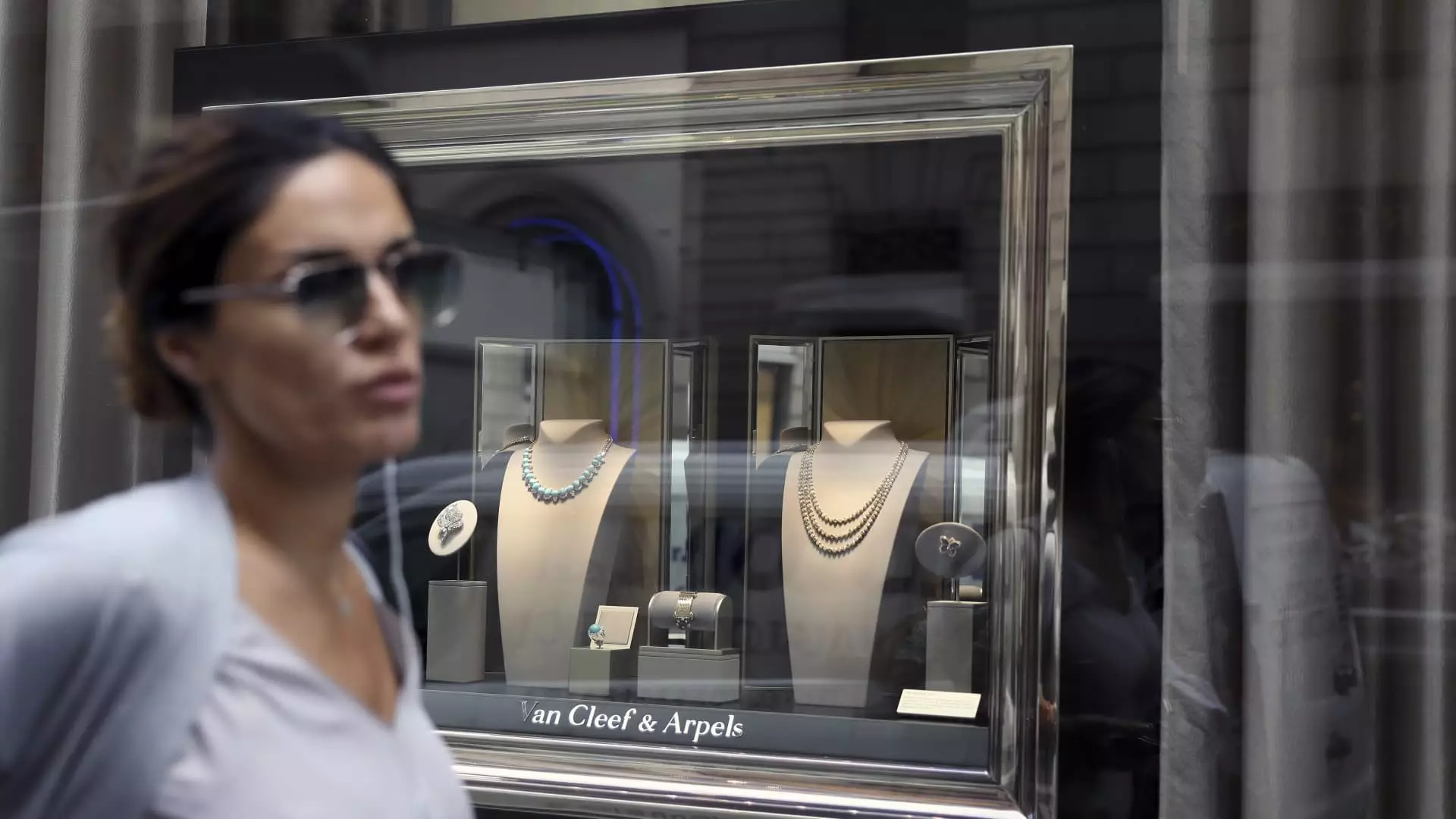In an age of consumer hesitance, where an air of caution blankets the luxury market, the world’s elite find themselves enchanted by the allure of exquisite jewels. Precious stones and impeccable craftsmanship have, perhaps now more than ever, evolved into symbols of enduring wealth and status. It’s no longer merely about acquiring an object; the wealthiest individuals are on a relentless quest for rarity and distinction. When a diamond-encrusted ring or a rare gemstone necklace enters their collection, it becomes a testament not just to wealth, but to an exquisite taste that sets them apart from the everyday luxury shopper.
As financial pressures weigh on the middle class, the super-rich seem to drift toward a more curated selection of jewelry, marking a pronounced demarcation in consumer behavior. This sharp shift towards exclusivity spells incredible news for premier luxury brands, particularly those under the banner of Swiss group Richemont, which englobe illustrious names such as Van Cleef & Arpels and Cartier. The exceptional performance of Richemont’s jewelry segment, despite downturns in broader luxury spending, exemplifies the company’s stronghold on desirability—a luxury not to be underestimated.
The Jewel Market’s Unyielding Resilience
Richemont’s latest fiscal report paints a promising picture with 11% growth in the Jewelry Maisons division, positioning it as a bastion of strength within the tense landscape of luxury goods. Meanwhile, industry giants like LVMH and Kering grapple with a flawed sales environment that has left many in despair. This trend raises critical questions about the nature of luxury consumerism: is the luxury market truly immune to external economic forces, or are we merely observing a funneling of wealth into select, high-value categories?
The answer lies in a subtle yet profound understanding of consumer psychology; luxury jewelry, inherently more frequent in its purchasing cycle compared to other luxury sectors like fashion and leather, creates a distinct advantage for companies like Richemont. There’s a sense that jewelry purchase decisions are rooted deeply in the human experience of celebration and commemoration, making them more likely to withstand market fluctuations than, say, a luxury handbag—usually reserved for special occasions.
Challenges Amidst Success
However, Richemont’s triumph over the jewelry sector does not shield it entirely from turbulent winds. The performance of the Specialist Watchmakers division reveals that luxury is experiencing a segmented crisis. A reported 13% decline in watch sales, with significant lag in markets like China, demonstrates that not all facets of luxury are equally buoyant. The watch industry, characterized by long-term investments in pieces regarded as ‘lifelong purchases’, reacts sluggishly to changes in consumer sentiment. Post-pandemic behaviors, including a collective buying spree of luxury timepieces, now create a backlog that the market must reconcile.
The enigma of privately owned luxury watch brands, such as Rolex and Patek Philippe, adds layers of complexity while influencing how the broader market is perceived and how its pulse is measured. What’s clear, however, is that this sector is not entirely out of the woods; analysts like Luca Solca suggest that the recovery will take time following rampant purchases during Covid-19—a challenge that could push the luxury watch segment into the shadows.
The Tenuous Balance of Pricing
Complicating Richemont’s landscape further are the pressures of macroeconomic factors that cannot be ignored. Challenges stemming from an emboldened Swiss franc against the dollar, spiking gold prices, and repercussions from tariffs lend an air of uncertainty to future profitability. Consequently, an impending decision looms over the company regarding price increases—a move that cannot be made lightly.
Richemont’s chairman, Johann Rupert, indicated vigilance in strategic price positioning, contrasting other luxury entities which may not exercise the same caution. This nuanced approach heightens the role of the jewelry division as a sustaining pillar in the company’s portfolio. Meanwhile, investment analysts remain skeptical, forecasting that Richemont may encounter significant hurdles ahead that could inhibit its capability to maintain its current market dominance.
In a climate where exclusivity is intertwined with emotional resonance, the glimmer of luxury jewelry remains undeniably potent. Still, one must ponder whether this brilliance can overshadow the storm clouds gathering on the horizon of economic instability. The luxury jewelry market may sparkle, but it is essential that investors and stakeholders keep their eyes clawed toward the volatile atmosphere surrounding it, as tomorrow remains uncharted.


Leave a Reply